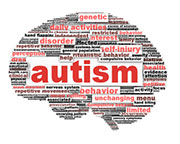
TUESDAY, July 30 (HealthDay News) — For parents of preschoolers with autism, finding a classroom program for their child may have just gotten a little easier.
A new study has found that it’s the quality of a teaching program — not the model of instruction — that seems to be most important to a student’s success.
That means parents shouldn’t fret when the local or available program is not a particular type, as long as it is considered good, said Samuel Odom, a co-author of the study and director of the Frank Porter Graham Child Development Institute, at the University of North Carolina at Chapel Hill.
Autism spectrum disorder occurs in about one in 88 children in the United States, according to the U.S. Centers for Disease Control and Prevention, with boys more likely to have the condition. Symptom severity can vary widely, but kids with autism typically have a hard time communicating and interacting with others.
The new research, recently published online in the Journal of Autism and Developmental Disorders, showed that two widely used comprehensive treatment models — called LEAP and TEACCH — were no better than high-quality special education preschool programs.
When quality factors were present in a classroom, the children’s performance improved over time, regardless of whether the teachers were using one of these two specialized teaching models or a more generalized special education focus, Odom said.
The key is not so much the philosophy of the teachers and staff or even the curriculum, but whether certain features associated with success are part of the classroom routine, he said.
Factors related to successful programs include a predictable classroom environment, individualized programming for students, emphasis on communication, and opportunities for social interaction with adults and potentially with other children with autism, Odom said.
LEAP stands for “learning experiences and alternative program for preschoolers and their parents,” and it’s designed to build more on an early childhood education curriculum with specific features that support the child with autism, Odom said.
TEACCH represents “training and education of autistic and related communication handicapped children,” and creates an environment that focuses on the characteristics of autism, he added.
While LEAP programs tend to be half-day programs, TEACCH classes typically are about six hours a day, and the “no particular model” programs vary in length, according to Odom. While the cost of the programs for parents can vary, many programs are available within public schools, he noted.
Odom said the study could shift thinking about comprehensive treatment models for young children with autism spectrum disorder. “Perhaps it’s not the unique features of each model that contribute to a child’s gains, but rather the common features of the models that most influence a child’s growth,” he suggested.
The study compared the progress of a total of 198 children in LEAP, TEACCH and non-model-specific special education classrooms in four states. Students were between the ages of 3 and 5, had autism, had been exposed solely to the treatment type in which they were currently enrolled, and had been in the classroom for a minimum of six months.
For students to be included in the study, their parents were required to be proficient enough in English to complete study surveys. Research staff observed classroom teacher adherence to the TEACCH or LEAP models, and all programs included adhered to specific, broadly accepted standards for quality.
Children’s thinking, behavioral, psychological and social progress were measured. The researchers found that children made gains or reductions in autism characteristics over time irrespective of program type.
One expert hailed the study as an important and much-needed analysis.
“There are competing intervention models with relatively little research to document their effectiveness in preschool kids and little research doing head-to-head comparisons,” said Dr. Andrew Adesman, chief of developmental and behavioral pediatrics at the Steven and Alexandra Cohen Children’s Medical Center of New York.
However, Adesman warned that because the findings were based on group data, the research may not show individual differences in benefit. The study did not look at whether different subsets of children may respond better to certain interventional approaches than did others, he noted.
“Not every child did well,” Adesman said. “You can have a high-quality program but it doesn’t mean your kid will do well.”
For teachers and others who are strong believers in TEACCH or LEAP, the discouraging message may be that there doesn’t seem be a single, best approach to teaching a child with autism spectrum disorder, he said.
Yet, for parents — especially those who don’t have access to one type of program or another — the message is more positive, Adesman said: “The encouraging thing from their perspective is that many different approaches may be effective.”
More information
Learn more about autism from the U.S. Centers for Disease Control and Prevention.
Copyright © 2025 HealthDay. All rights reserved.

